The Real Reason Your Whites Look Dingy (And How to Actually Fix It)
I’ve spent a long, long time working with fabrics—starting way back in a small, family-owned dry cleaners. It was there I learned that keeping white clothes looking brilliant isn’t about laundry hacks or wishful thinking. It’s a science. It’s not about dumping in more soap or dousing everything in bleach. It’s about understanding the fabric, the water you’re using, and the type of grime you’re fighting.
In this article
- Overwhelmed? Start Here.
- The Real Culprit: Why Whites Stop Being White
- Let’s Talk About Your Water
- Pro-Level Sorting: It’s More Than Just Colors
- The Art of Removing Stains Before They’re Permanent
- Choosing Your Tools: Detergents and Boosters
- Oxygen Bleach vs. Chlorine Bleach: The Real Story
- Drying: Don’t Ruin Your Hard Work
- The Ultimate Reset: How to Strip Your Laundry
- A Final Piece of Advice
- Inspirational Gallery with Photos
So many people get frustrated when their crisp white shirts slowly fade to a sad, dingy gray or a murky yellow. They think the clothes are ruined, but I’ve seen heirloom linens, yellowed and forgotten in a chest for decades, brought back to life. The truth is, with the right approach, most whites can be saved. This is the professional method, the one that works consistently and will make your clothes last so much longer.
Overwhelmed? Start Here.
Look, I get it. This can seem like a lot. If you’re going to make just a few changes this week, focus on these three things. They’ll give you the biggest bang for your buck.
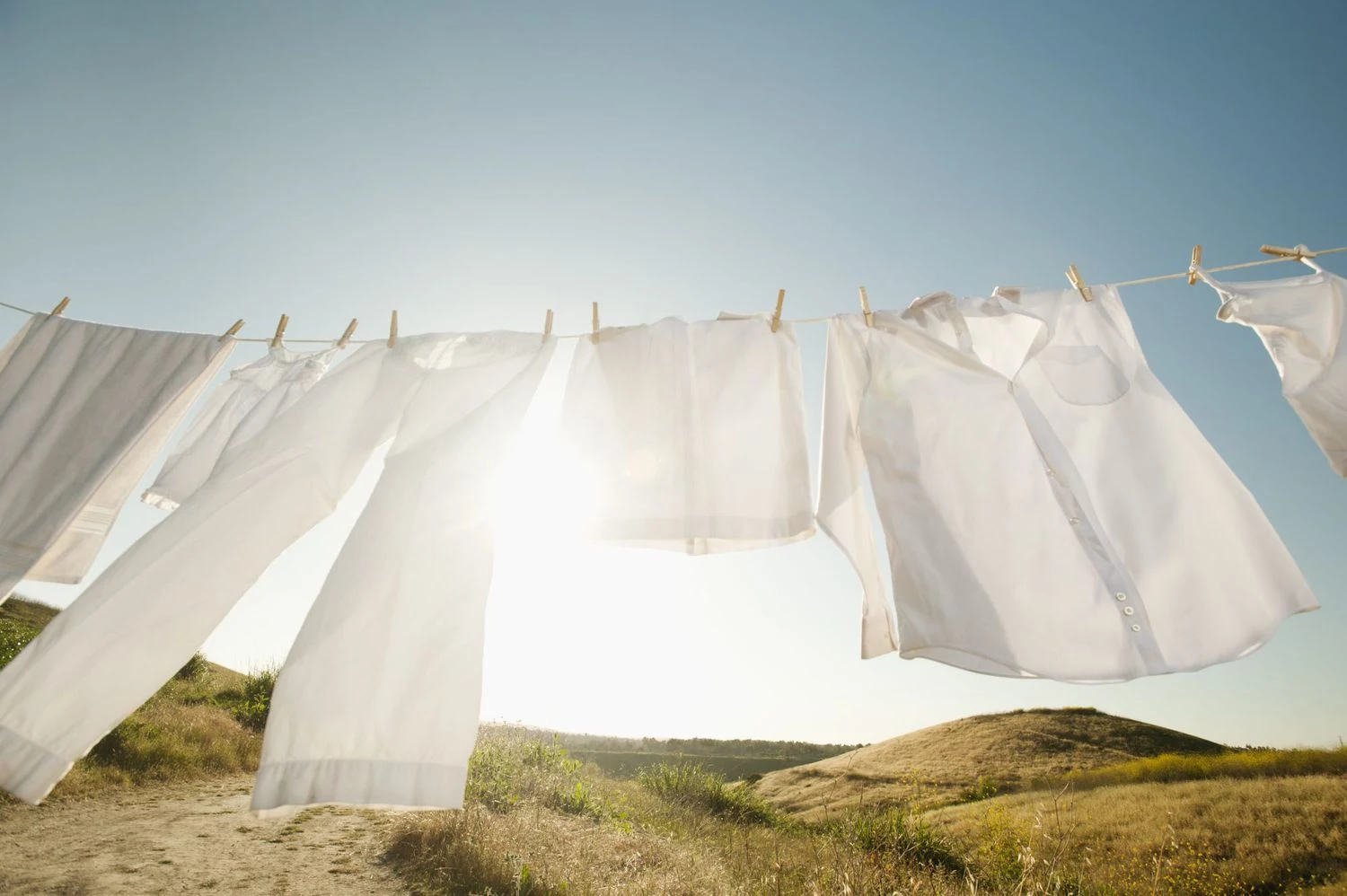
1. Stop washing towels with your t-shirts. Seriously. Sort your whites into at least two piles: heavy stuff (towels, denim) and lighter stuff (shirts, underwear). The heavy fabrics are abrasive and they beat up your lighter clothes in the wash. 2. Add an oxygen bleach booster. Grab a tub of OxiClean or a similar product with sodium percarbonate. It’s much safer than chlorine bleach and works wonders on everyday dinginess. A scoop in every white load is a game-changer. 3. Use less detergent. This sounds crazy, but too much soap leaves a sticky residue that attracts dirt. For a modern, high-efficiency machine, you often only need a tablespoon or two. If you see suds in the final rinse, you’re using too much.
The Real Culprit: Why Whites Stop Being White
Before you can fix the problem, you’ve got to know what’s really going on. White fabrics face a few common enemies. That gradual graying? That’s often a slow buildup of mineral deposits from your water and dirt that didn’t quite wash out. If your detergent isn’t up to snuff, that grime just resettles right back onto your clothes.
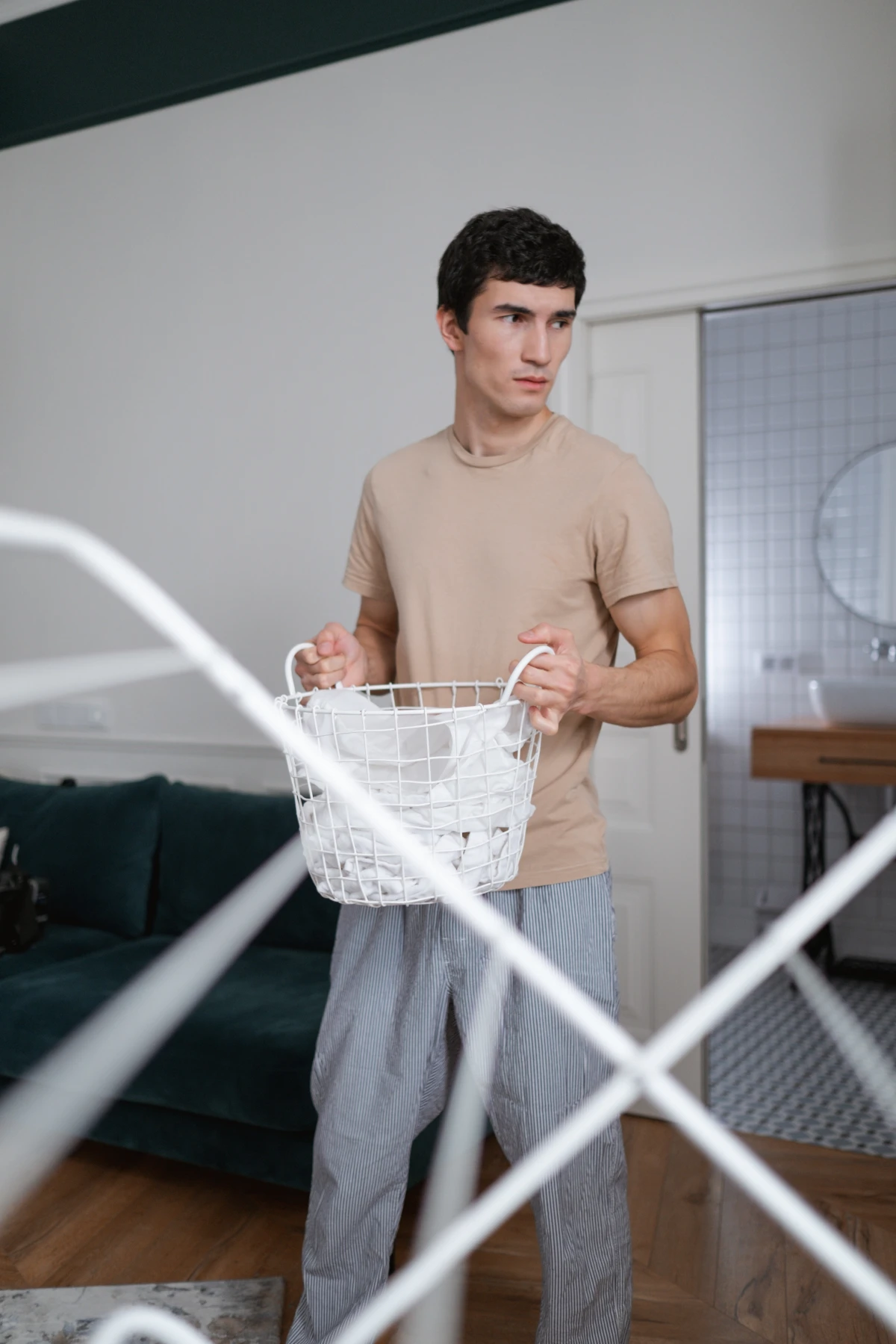
Hard water is a major villain here. The minerals in it, like calcium and magnesium, literally cling to fabric fibers and act like a magnet for dirt. They also block your detergent from doing its job effectively. Yellowing, on the other hand, is usually caused by body oils and sweat reacting with your detergent over time. It can also be a sign of chlorine bleach being overused or reacting badly with synthetic fabrics.
Oh yeah, and new white clothes have a secret. Manufacturers use something called optical brighteners. These chemicals trick your eyes into seeing a super-bright white by reflecting blue light. They wash out over time, which is why a brand-new shirt looks so much more brilliant than one you’ve washed 20 times, even if they’re both technically clean.
Let’s Talk About Your Water
The single most important factor in your laundry room is your water. You can figure out what you’re dealing with by getting a simple water hardness test kit, which you can find online or at a hardware store like Home Depot for about $10-$15. If your water is hard, you have to deal with it.

The best long-term fix is a whole-house water softener, but that’s a big investment. For laundry, you can simply add a water-softening agent to each wash. A product like Calgon works, but honestly, Borax or washing soda are fantastic and much cheaper. A big box of Borax costs less than $10 and will last you ages. Just add about a half cup to the drum with your detergent. It binds to the minerals, freeing up your detergent to focus on the actual cleaning.
Pro-Level Sorting: It’s More Than Just Colors
Everyone knows to separate whites from colors. But in a professional setting, we take it two steps further. After you’ve made a pile of pure whites and very light pastels, you need to sort that pile again.
First, sort by fabric weight. Washing heavy items like towels and jeans with delicate t-shirts is a huge mistake. The friction from the heavy fabrics causes pilling and wears out your lighter clothes fast. Plus, towels shed a ton of lint that sticks to smoother fabrics, making them look fuzzy.
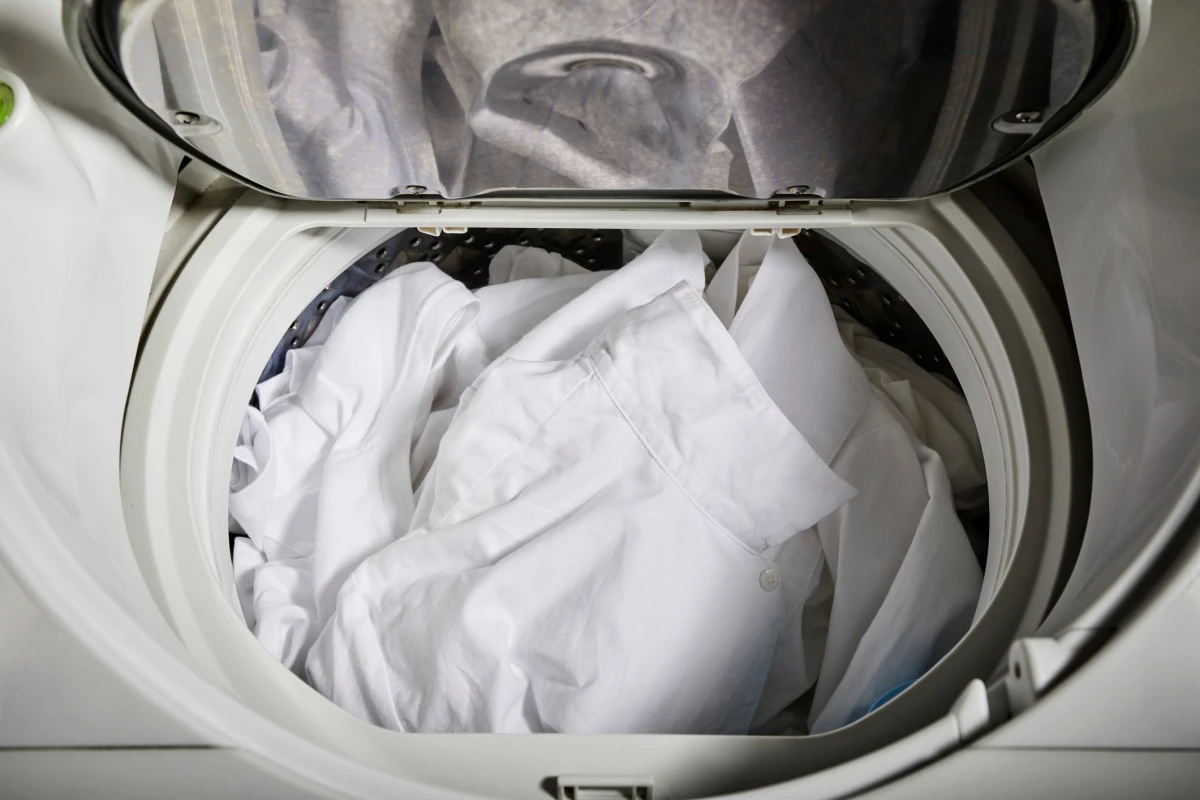
Next, sort by soil level. Muddy garden clothes don’t belong with lightly worn office shirts. Washing them together means you either under-wash the filthy stuff or over-wash the clean stuff, and over-washing just wears out fabric for no reason. So, for your whites, you should ideally have three piles: towels/sheets, regular clothes, and heavily soiled items.
The Art of Removing Stains Before They’re Permanent
Pre-treating stains is non-negotiable. The heat from your washer or dryer can set a stain forever. The first step is to figure out what kind of stain you have.
Here’s what’s in my personal stain-fighting kit. It’s simple but effective:
Hydrogen Peroxide: Great for plant-based stains like coffee, tea, and wine. An Enzyme-Based Stain Remover: Look for a spray like Puracy or Zout (usually $5-$10 a bottle). This is essential for protein stains like blood, sweat, or grass. Clear Dish Soap: A classic for a reason. A bottle of Dawn is perfect for cutting through oil-based stains like salad dressing or makeup. A Soft-Bristled Brush: An old toothbrush works perfectly.
Quick Tip: Keep a small spray bottle of diluted enzyme cleaner right by your laundry hamper. The moment you take off a shirt, give the collar and cuffs a quick spray. It takes five seconds and does the pre-treating for you as it sits.
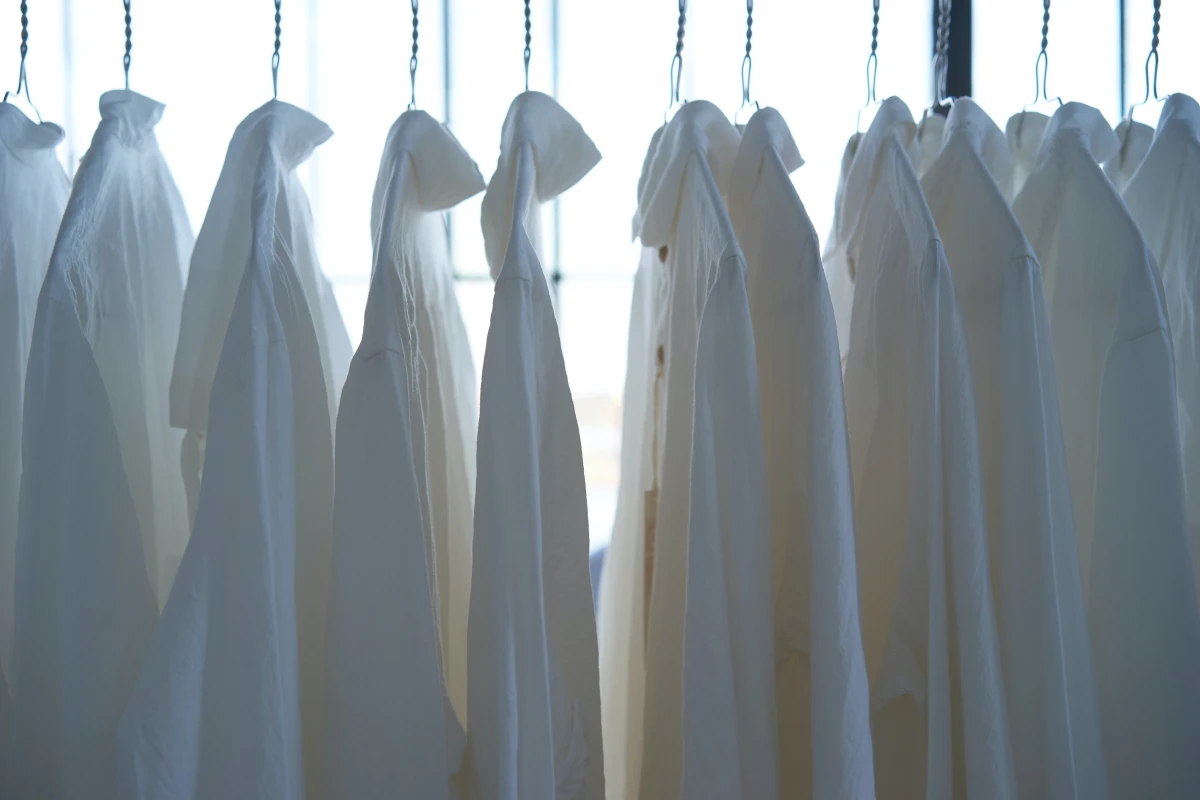
For those stubborn yellow underarm stains—a dreaded combo of sweat and deodorant—I make a paste. Mix one part clear dish soap, two parts hydrogen peroxide, and a generous sprinkle of baking soda to make a thick, spreadable paste. Work it into the stain with your soft brush and let it sit for at least an hour before washing. It works wonders.
Choosing Your Tools: Detergents and Boosters
The laundry aisle is designed to be confusing. Let’s cut through the noise. For whites, I usually recommend a high-quality powder detergent, like the classic Tide powder. Powders often contain mild, oxygen-based bleaching agents that liquids don’t, making them super effective for whites. That said, liquids are great for pre-treating stains directly.
And remember, more soap is NOT better. For a modern HE washing machine, you might only need a single tablespoon. For an older, water-guzzling top-loader, you might need two or three. Start small!
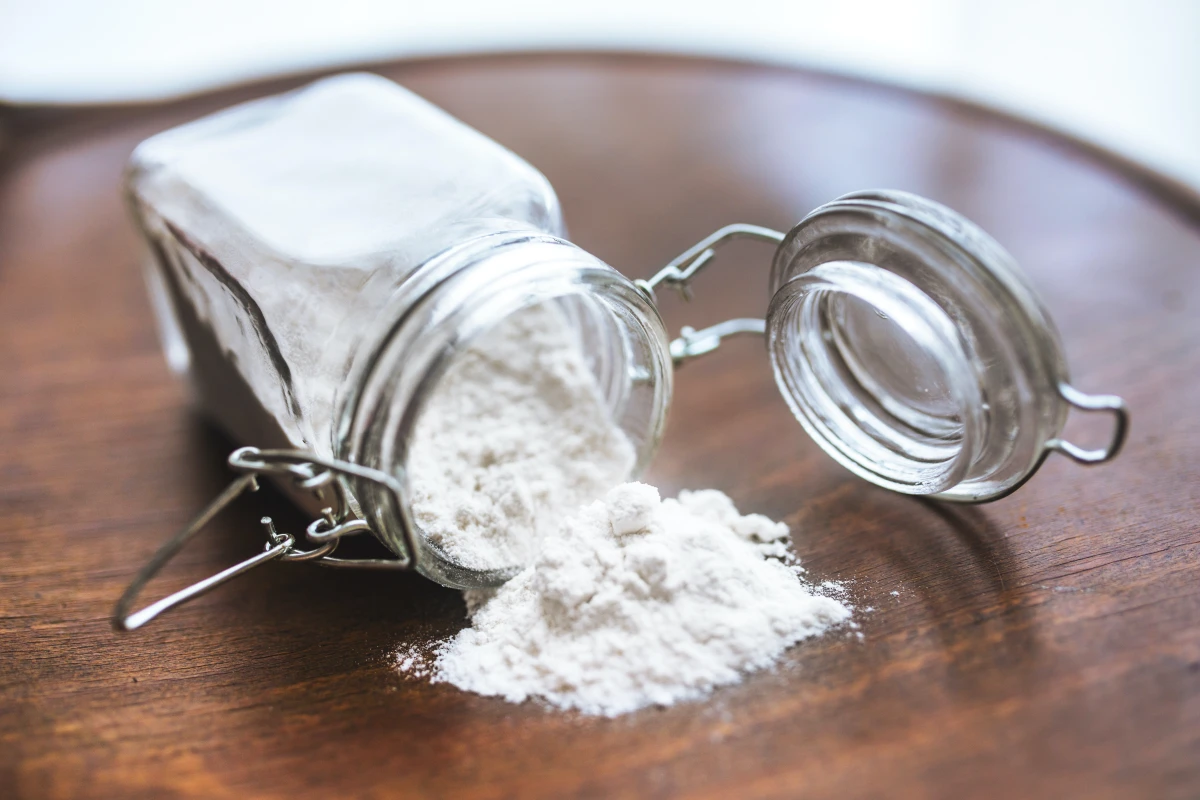
Boosters are what take your laundry from clean to bright. Oxygen Bleach (Sodium Percarbonate): This is the active ingredient in products like OxiClean White Revive (around $15-$20 a tub). It’s my go-to whitener. It’s a powdered form of hydrogen peroxide that releases oxygen in warm water, gently bleaching away stains without the harshness of chlorine. It’s safe on most fabrics. Bluing: This is an old-fashioned trick that still works amazingly. A product like Mrs. Stewart’s Bluing adds a tiny amount of blue pigment to the water, which counteracts any yellowing and makes our eyes see a crisper white. A small bottle is less than $5 and lasts forever. Heads up! You HAVE to dilute it first. Mix about a quarter teaspoon of bluing into a full quart or two of water, and then add that diluted mixture to your machine’s final rinse cycle. Never pour it directly on clothes, or you’ll get bright blue spots.
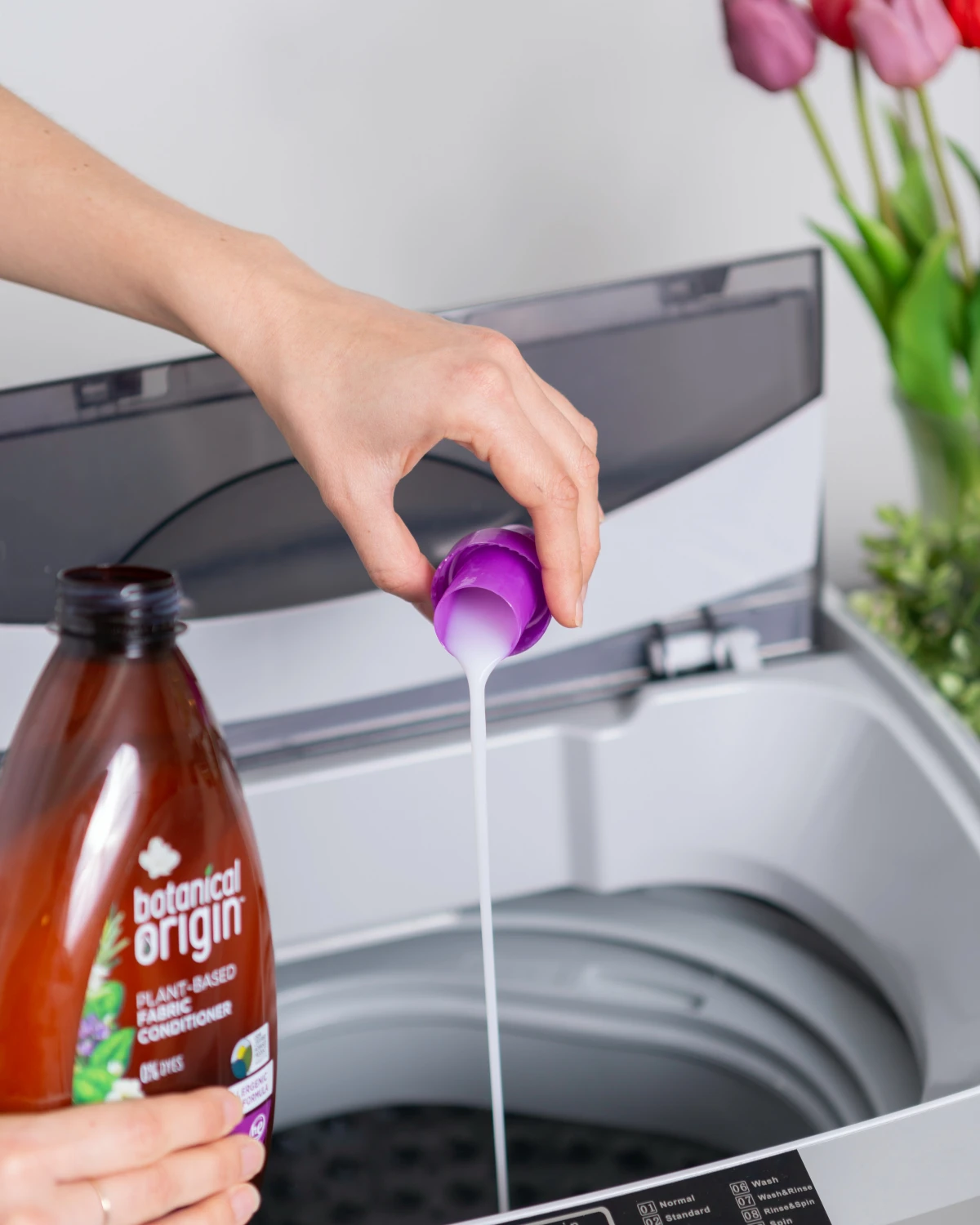
Oxygen Bleach vs. Chlorine Bleach: The Real Story
I almost never reach for chlorine bleach. While it’s a powerful disinfectant, it’s also incredibly harsh. It’s a choice you should make with open eyes.
Oxygen Bleach is your everyday hero. It’s best for regular whitening and brightening of most clothes, including cottons, linens, and synthetics. It’s gentle on fibers, the risk of damage is very low, and it’s great for tackling general dinginess and most organic stains. This should be your default choice.
Chlorine Bleach is a specialist tool. It’s best for heavy-duty disinfecting on 100% white cotton items, like sanitizing bed sheets after someone’s been sick. However, it can weaken and yellow cotton fibers over time and will permanently damage fabrics like wool, silk, nylon, and spandex. The biggest issue is safety: NEVER, ever mix chlorine bleach with ammonia or even products that might contain it (like some stain removers or, yes, even urine). The combination creates toxic gas. To be frank, the risks often outweigh the rewards, which is why I stick to oxygen bleach for 99% of my laundry.
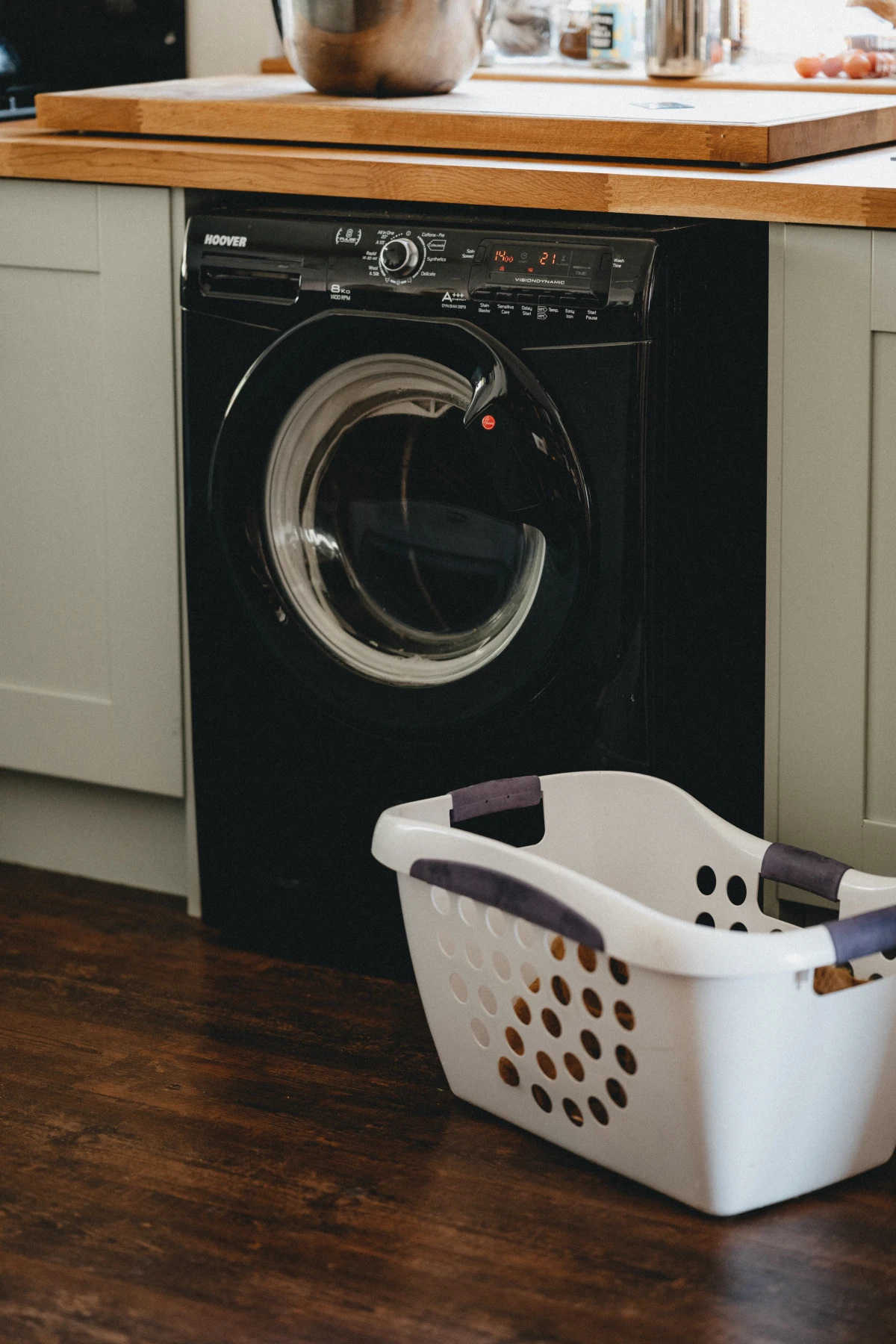
Drying: Don’t Ruin Your Hard Work
How you dry your whites is the final step to locking in brightness. The absolute best method? Drying them outside in the sun. The sun’s UV rays are a natural bleaching and disinfecting agent. It’s free and incredibly effective.
If you have to use a machine, avoid high heat. Over-drying can scorch fabrics, causing yellowing, and it sets any stains you might have missed. Use a low or medium heat setting and pull the clothes out when they’re still just a little bit damp, then let them air-dry the rest of the way. And please, skip the fabric softener and dryer sheets on your whites, especially towels. They coat fibers in a waxy film that dulls whites and kills a towel’s absorbency. A better alternative is a set of wool dryer balls; they soften clothes by tumbling against them and even shorten drying time.
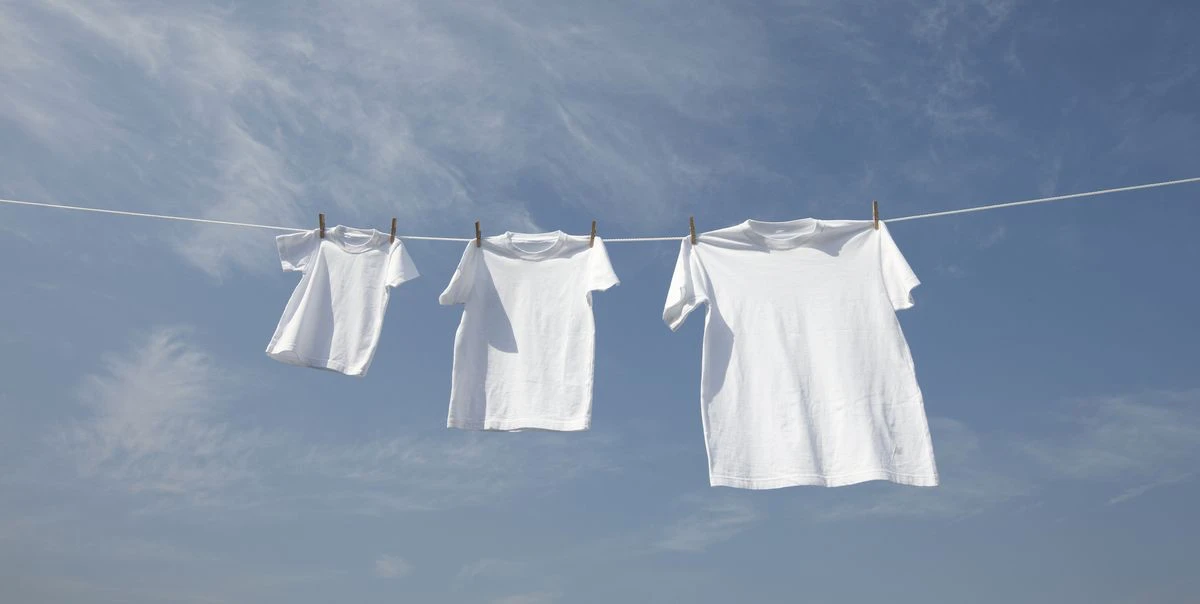
The Ultimate Reset: How to Strip Your Laundry
Sometimes you need to call in the big guns for clothes that are severely yellowed or dingy. For this, we use a process called laundry stripping, which is basically a long, hot soak to pull out deep-set mineral and product buildup. (Quick disclaimer: only use this on durable fabrics like cotton and linen.)
You can do this in a clean bathtub, a top-loading washing machine with a soak setting, or even a large plastic storage tote. Fill it with very hot water, then stir in a quarter cup of Borax, a quarter cup of washing soda, and a half cup of a good powder detergent. Add your clean, dry white items and let them soak for at least four to six hours, stirring every hour or so.
I’m not kidding, you will be shocked and disgusted by the color of the water. It will often turn a murky, gray-brown mess. That’s all the gunk that was hiding in your supposedly “clean” clothes! It’s gross, but so, so satisfying. After the soak, wring them out and run them through a normal wash cycle in the machine with NO detergent.
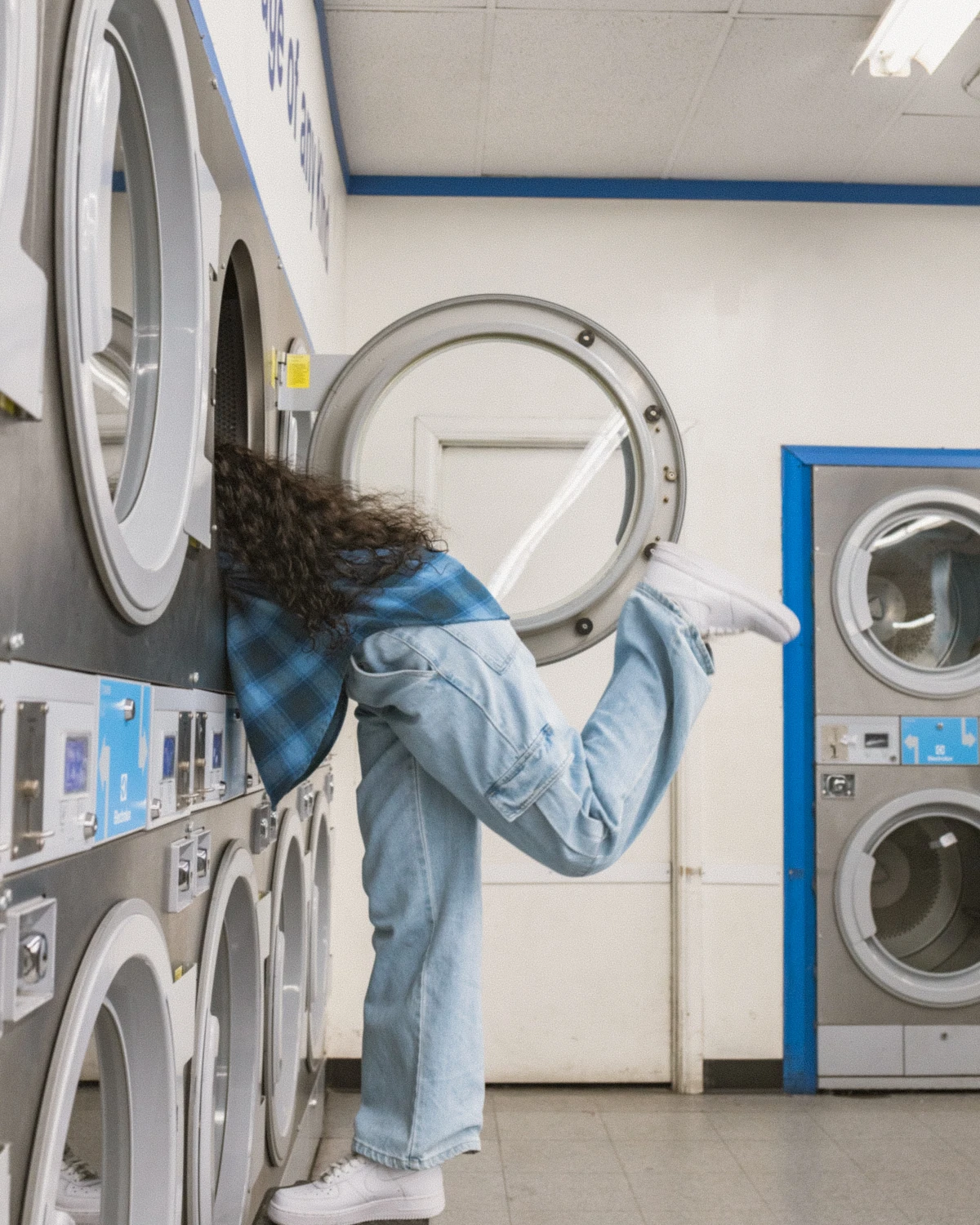
A Final Piece of Advice
Keeping whites bright isn’t about a single secret. It’s about building a consistent routine. Sort carefully, treat stains quickly, use the right products for your water, and let the sun do its thing. It takes a little more thought than just tossing everything in the machine, but the payoff is huge. Your clothes will look better, feel cleaner, and last for years to come.
Inspirational Gallery with Photos
Chlorine Bleach (e.g., Clorox): A powerful disinfectant, but harsh. It can weaken cotton fibers over time and cause permanent yellowing on synthetics like polyester or spandex. Reserve it for sanitizing sturdy, 100% cotton items.
Oxygen Bleach (e.g., OxiClean, Nellie’s Oxygen Brightener): A gentler, color-safe alternative. It uses sodium percarbonate to break down stains and brighten. Much safer for most fabrics and a better choice for routine whitening.
For everyday brilliance and fabric longevity, oxygen bleach is the modern professional’s choice.
The sun’s ultraviolet rays have a natural bleaching effect that breaks down stains and whitens fabric fibers.
This is why line-drying is so effective for white cottons and linens. It’s a free, chemical-free way to achieve a level of brightness that a machine dryer simply can’t replicate. The fresh scent is just a bonus.
What about bluing? Does that old-fashioned trick still work?
Absolutely, it’s a brilliant optical illusion! Fabrics that have yellowed absorb the subtle blue pigment from a product like Mrs. Stewart’s Bluing. This counteracts the yellow tone, tricking our eyes into seeing a brighter, cleaner white. It doesn’t remove stains, but it masterfully masks the dinginess. Just a few drops in your final rinse cycle can make a surprising difference.
For those stubborn, yellowed underarm stains on white t-shirts, a targeted attack is needed. Here’s a professional pre-treatment:
- Create a thick paste using a scoop of OxiClean White Revive and a few drops of warm water.
- Use an old toothbrush to gently scrub the paste into the stained areas.
- Let it sit for at least an hour—or even overnight for deep-set stains—before washing as usual.
- Avoid high heat in the dryer until you’re sure the stain is gone, as heat can set it permanently.
Up to 80% of the dirt removed in a wash cycle can be redeposited back onto clothes if the detergent isn’t effective at suspending it in the water.
The enemy isn’t always a stain; sometimes it’s your own washing machine. Detergent residue and mineral buildup can create a grimy film inside the drum that transfers to your clothes. Once a month, run an empty, hot-water cleaning cycle with a dedicated washer cleaner like Affresh, or use two cups of white vinegar to dissolve buildup and keep your machine from making your whites dingy.
- They break down protein-based stains like sweat and grass.
- They work effectively even in cooler water, saving energy.
- They target grime without being harsh on fibers.
The secret? Using a modern, enzyme-based detergent. Look for brands like Persil ProClean or Tide with enzymes listed in their ingredients. They offer a more sophisticated clean that’s especially effective at preventing the gradual graying of white fabrics.
A critical mistake: Overloading the machine. We’ve all done it to save time, but cramming the washer prevents clothes from agitating freely. This means water and detergent can’t circulate properly to clean and rinse away dirt. The result is poorly washed clothes with lingering residue, which is a primary cause of dinginess. For best results, the drum should never be more than three-quarters full.
There’s a unique satisfaction that comes from the crisp, clean feel of perfectly white linens or a brilliant white shirt. It’s more than just an absence of dirt; it’s a sensory experience of freshness and simplicity. Taking the extra steps to care for your whites is an investment in restoring that feeling of everyday luxury, transforming a simple garment into something that feels pristine and new again.










